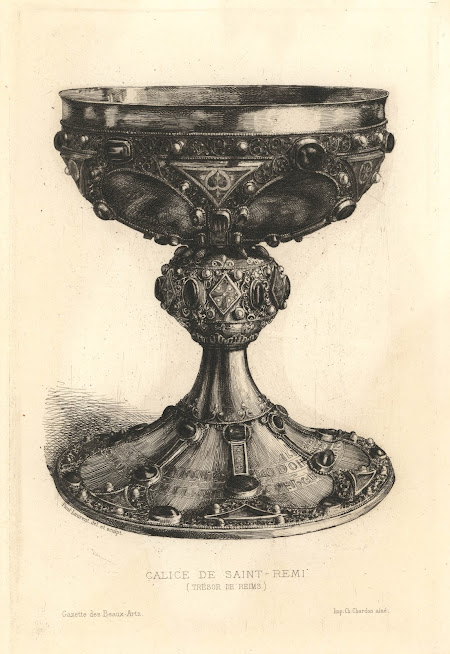Alphonse
Descaves (aka Alphonse-Louis Descaves) (1830–1890)
“Edmond and
Jules de Goncourt”, c1855, after a photograph (c1855) by Félix Nadar (aka
Gaspard Félix Tournachon) (1820–1910).
The famous French
brothers, Edmond (1822–1896) and Jules de
Goncourt (1830–1870), were inseparable and even in death I understand that they
were buried in the same grave. In fact, they were so close that the following
extract from their journal (“Le Journal des Goncourt” [1851], 20 December 1866)
says it all: [transl.) “We are now like women who live together, whose health
mingles, whose periods come at the same time: our migraines come to us on the
same day” (vol. 2, p. 308). Perhaps not surprising, they also worked collaboratively
as writers and both were artists whose prints I have showcased earlier; see:
- Jules de
Goncourt’s etching, “Portrait de Chardin”, 1876, after Maurice Quentin de La
Tour (https://www.printsandprinciples.com/2021/07/proof-and-lettered-states-of-jules-de.html);
- Jules de
Goncourt’s etching, “Profil d'homme”, c1861, after Paul Gavarni (https://www.printsandprinciples.com/2021/03/jules-de-goncourts-etching-profil.html);
- Jules de Goncourt’s etching, “Le Goblet
D'Argent (after Chardin)”, 1862 (https://www.printsandprinciples.com/2020/09/jules-de-goncourts-etching-le-goblet.html).
Etching (with
dot roulette) on cream wove (Japon) paper with wide margins.
Size: (sheet)
30.9 x 23.8 cm; (plate) 18.6 x 12 cm.
Inscribed in
plate: (on cushion) “Alphse Descaves”.
Condition: a strong
and near faultless impression in near pristine condition with no tears, holes,
folds, abrasions, significant stains or foxing.
I am selling
this amazingly fine etching of the remarkable French brothers who wrote
collaboratively about everyday life in the art world of Paris during the late
1800s, for the total cost of AU$224 (currently US$150.57/EUR142.15/GBP125.08 at
the time of this listing) including postage and handling to anywhere in the
world, but not (of course) any import duties/taxes imposed by some countries.
If you are
interested in purchasing this rare and very beautiful etching, please contact
me (oz_jim@printsandprinciples.com) and I will send you a PayPal invoice to
make the payment easy.
This print has been sold


















































